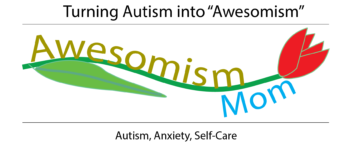At home with dyslexia – five tips for success
JUNE 28, 2016 / CROSSBOWEDUCATIONUSA
My eldest daughter is a qualified Doctor of Medicine. However her teacher would never
have predicted her career success when she was in elementary school, still just looking at the pictures when all her peers had launched into reading books; or in the juniors, when she seemed to spend more time gazing out of the window than looking at the board (still black in those days).
Like about 15% of the population, Shelley is Dyslexic. She has a specific learning difficulty which does not mean she is unintelligent (far from it) or lazy, but which means she has specific problems which need to be addressed and supported if she is going to make the most of her learning opportunities. Dyslexia is, of course, not the only specific learning difficulty that can affect a child’s educational progress, and in many cases strategies and resources for one can also be helpful for others. In fact most children can probably benefit from some of the following tips, which come from my experience not only as a parent, but also as a special ed. teacher and publisher of SpEd resources.
Make it visual
More of the brain is devoted to visual signals than any other way of processing information. The size of the optic nerve compared to the auditory processing part of the brain is like that of a double decker bus to a toy car. Give your child the opportunity to reinforce learning through pictures and diagrams wherever possible.
Encourage the use of mind maps– if you don’t know what they are Google it: they were popularised by Tony Buzan. We used to let Shelley mind map (with washable pens!) all over the patio doors and her bedroom window when she was revising: just having essential information displayed in strong colours in a visually accessible format that her brain was processing subconsciously whenever she was in the room made a difference, as well as the actual activity of doing the mind map on the window in the first place.
Make it multisensory
Don’t just make the eyes and ears do the work: involve touch as well. Magnetic letters on the fridge are great, especially foam ones that are pleasant to handle: get your child to spell out words, or put up a few yourself and get your child to find the spelling mistakes(s).
Make it fun
Play is the natural learning mode of mammals – why not use games for schoolwork? A good learning game will be visually strong and will involve the players manipulating the different elements of sets they have to learn, physically putting letters together to make words, words to make sentences, symbols to make formulae etc. Cards, dice and spinners are good, but be careful with board games as they can often just involve children reading words off a board without actually doing anything with them.
Make it short
What your child needs most of all is success. If Shelley can’t succeed with ten spellings, try her on three, and hassle her teacher to make sure she only gets given what she can do! Don’t insist on them sitting down with a book for too long, particularly if your child is ADHD. Turn the concentration problem into a challenge: set a timer for five or ten minutes and get them to try and complete a specific task within that time. You’ll get more focus out of a few short bursts than one prolonged session.
And finally, make it sweet.
Whatever your child’s needs or difficulties don’t let them get in the way of your relationship! A despairing “When will you ever learn…” attitude will only make their own despair worse. Encourage anything they are good at, to build their self esteem: you don’t know where it may lead in later life. What they long for most is for your love and approval: make sure their lack of success at learning does not deprive them of this most precious gift.
Bob Hext – Crossbow Education Founder and Special Ed Teacher
Editors Note: Thank you Bob! Be sure to visit our friends at Crossbow Education

